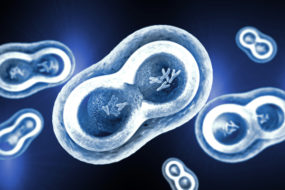Array CGH is an advance in technology and is a new screening test that detects a loss or gain of chromosomes. It is more sensitive than the standard test (FISH) which has the limitation of only testing 4 or 5 chromosomes at a time. Array CGH can analyze all 46 chromosomes in a single test and may discover an abnormality that would not have been detected by FISH.
To understand how array CGH works, you have to understand a little about DNA, genes and chromosomes





